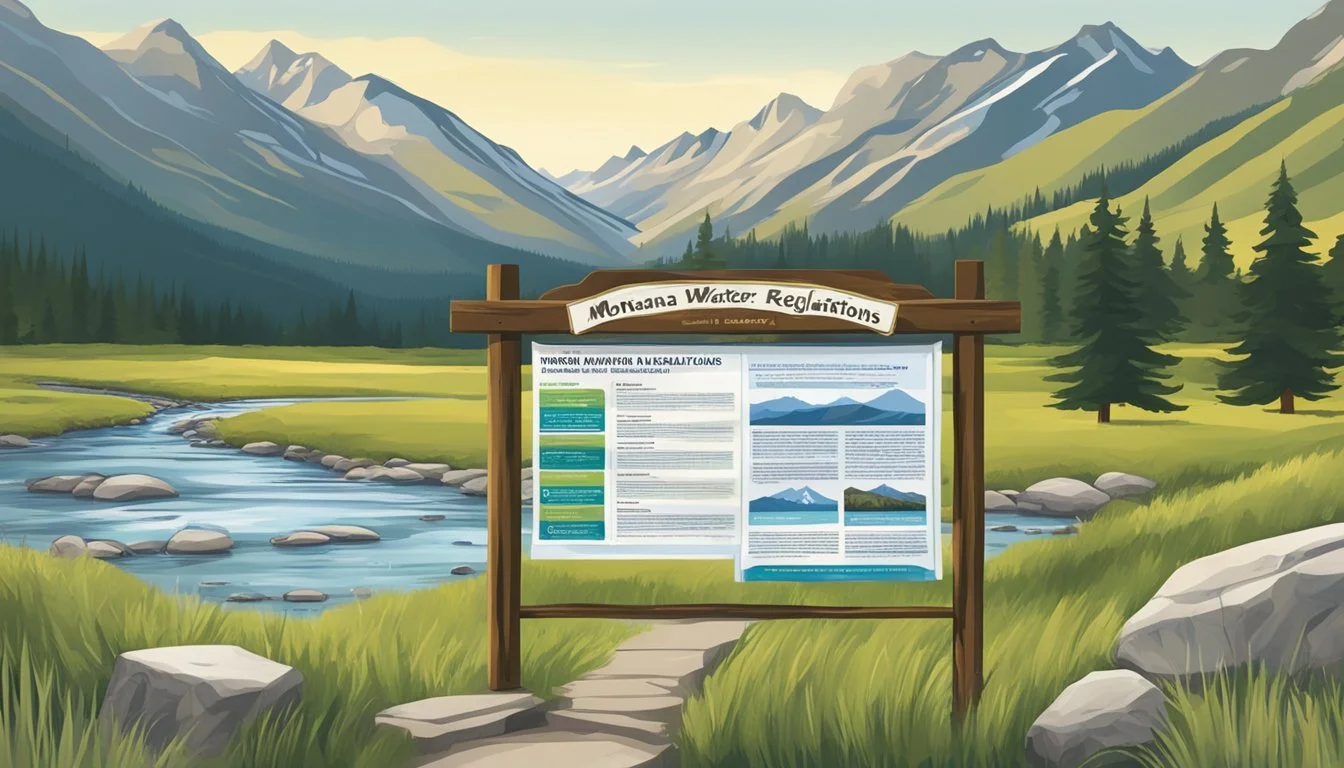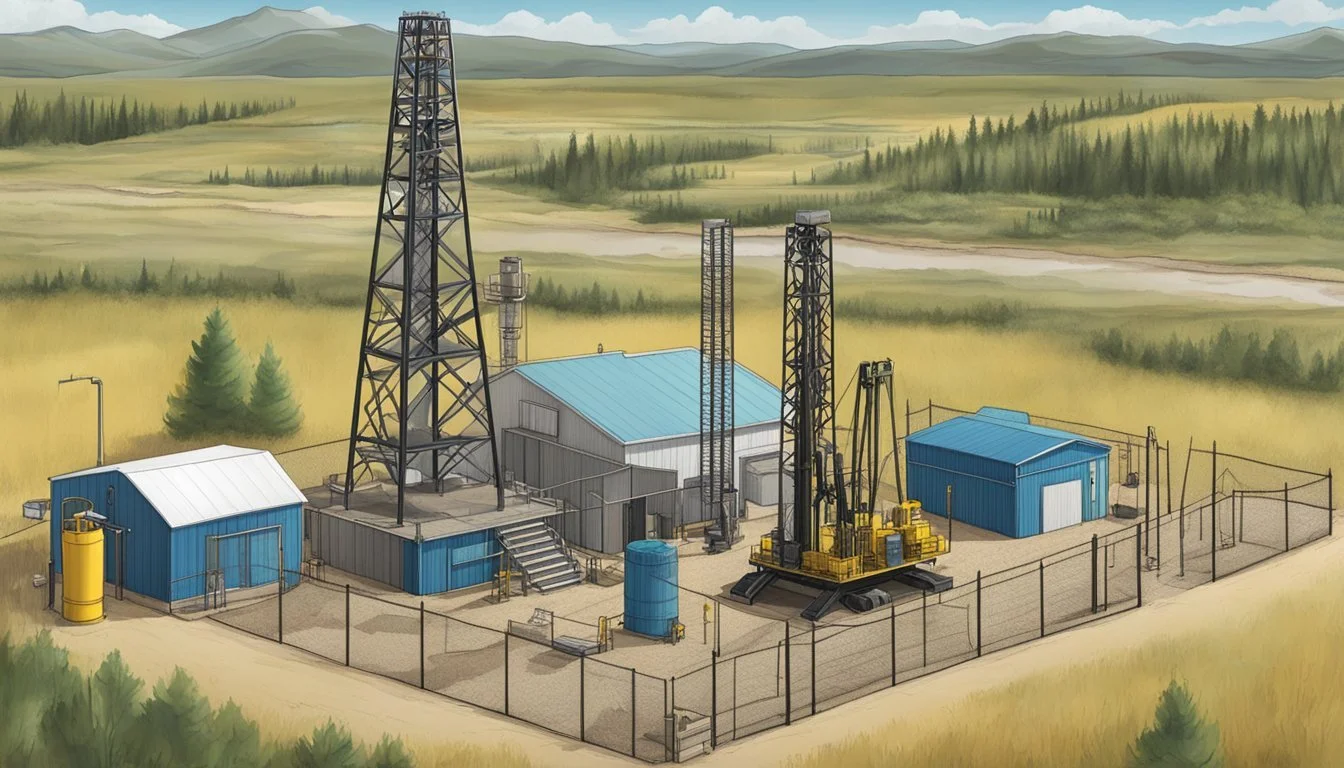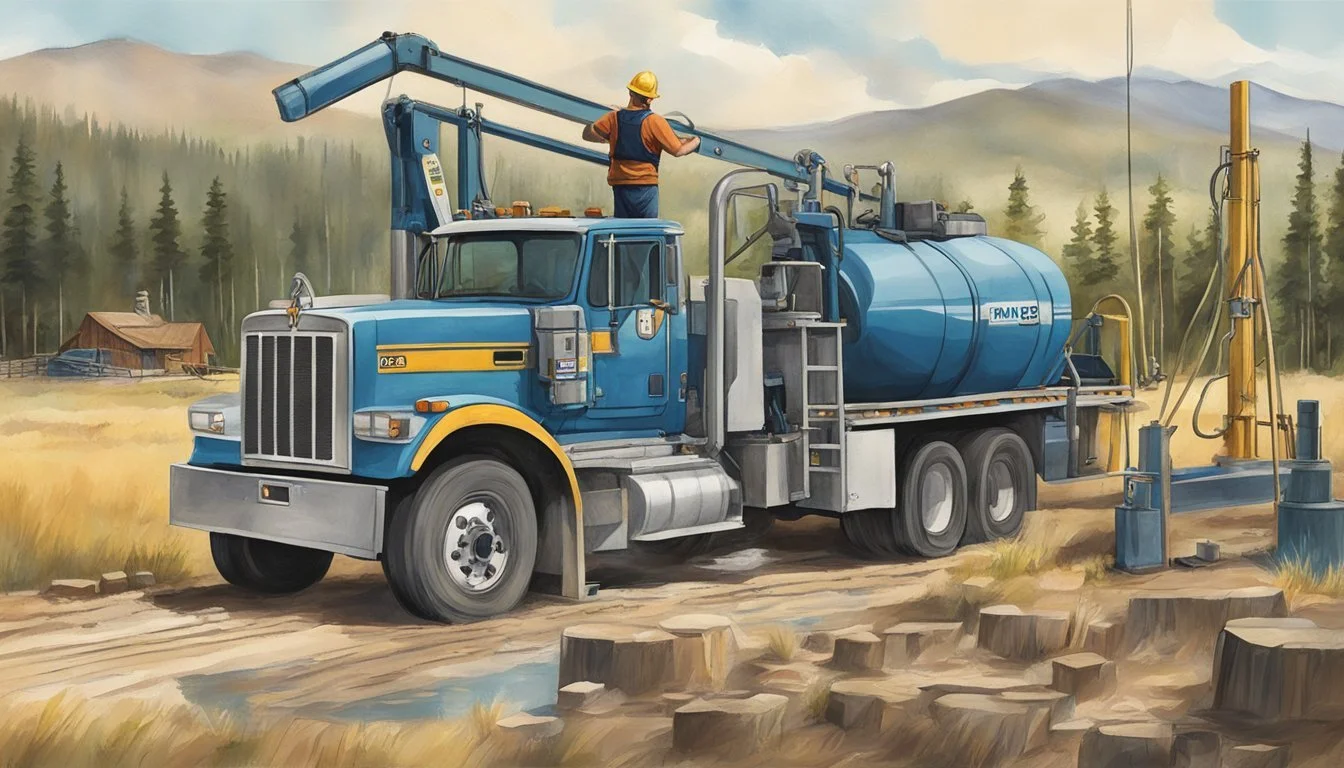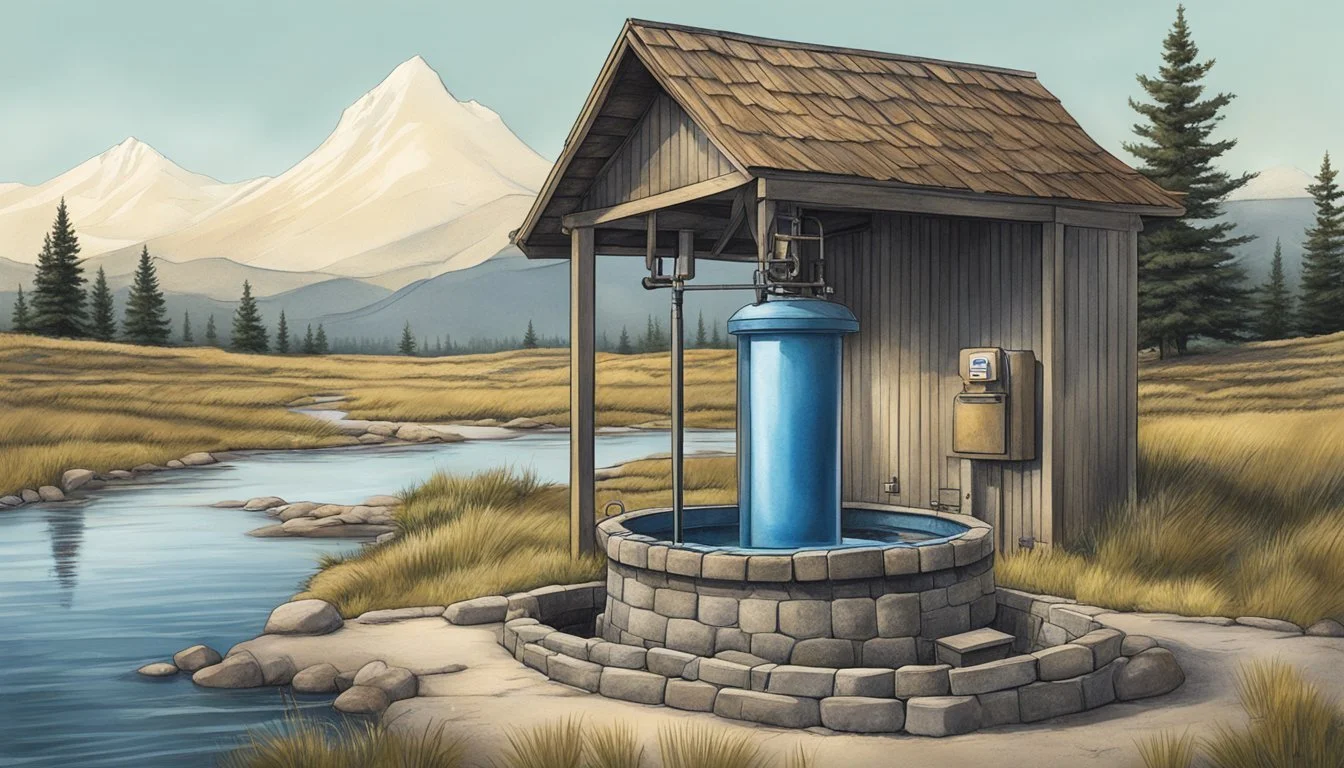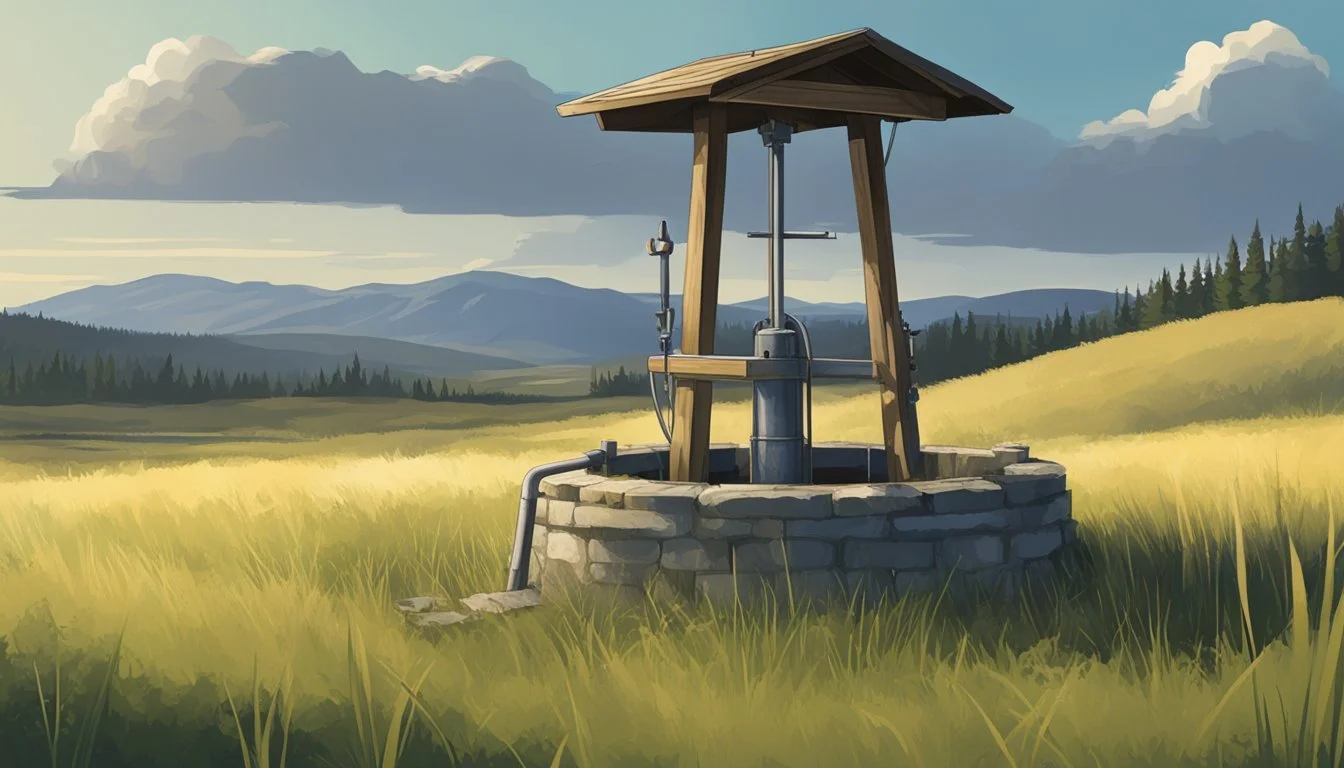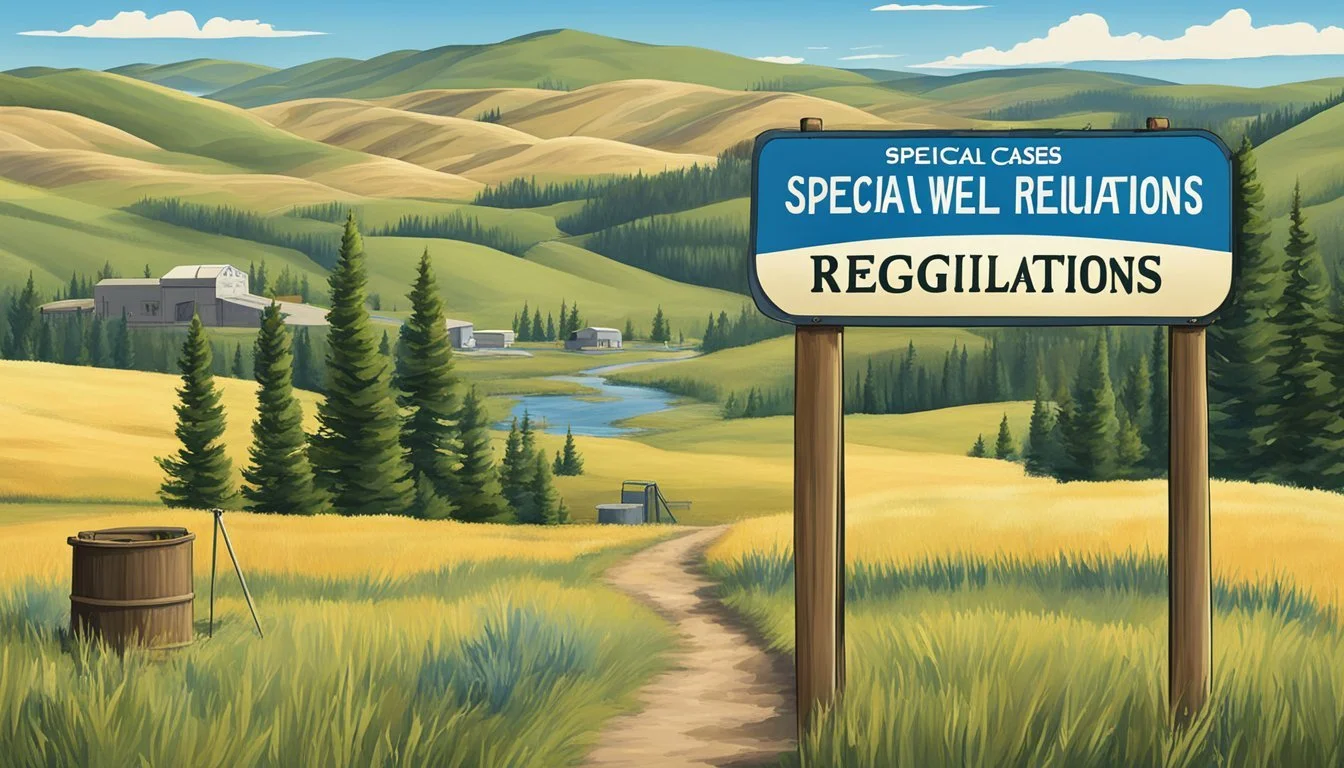Montana Water Well Regulations
Understanding Compliance for Property Owners
Water well construction and maintenance in Montana are regulated to ensure public safety, water quality, and environmental protection. Understanding these regulations is crucial for prospective well owners, contractors, and any party involved in the drilling, maintenance, or alteration of water wells. A reliable source of clean water is essential for households, agriculture, and industry, making the proper development and management of water wells a matter that affects the daily lives of Montanans.
The state mandates specific requirements ranging from well yield to construction practices. Prospective well owners should be aware that a domestic well must provide a yield sufficient to meet their needs, which is generally estimated at 10 to 25 gallons per minute for a typical family of four. This yield ensures that household necessities, including lawn and garden watering, can be consistently met. In cases where lower yields are encountered, adequate storage tanks can compensate for the reduced flow to maintain a sufficient supply.
Contractual agreements between well owners and contractors are regulated to include clear terms and conditions, protecting both parties’ interests. These drilling agreements should outline details such as the names and addresses of the involved parties, the scope of work, and any other pertinent information regarding the well’s construction. Compliance with the Administrative Rules of the State of Montana is mandatory, covering licensure requirements and responsibilities for water well contractors to ensure that all practices meet the regulated standards.
Understanding Montana Water Well Regulations
Montana's water well regulations are crucial for maintaining water quality and managing water rights to ensure the well-being of both the environment and the public.
Historical Context and Significance
Montana's water resources, historically managed through an evolving legal framework, balance individual water rights with the collective need for sustainable water use. The state's approach to water management has been shaped by court rulings, like the A significant decision in 2016 where Montana's Supreme Court moved to limit groundwater permitting exemptions, ensuring stricter adherence to the legislative intent behind water rights and resources conservation.
Key Water Well Regulatory Bodies
Montana Department of Natural Resources and Conservation (DNRC) spearheads the regulation of water wells, working in conjunction with key agencies such as the Montana Department of Environmental Quality (DEQ). These regulatory bodies enforce standards that protect groundwater and the surrounding ecosystems, necessitating coordination with the Environmental Protection Agency (EPA) to align state regulations with federal directives, particularly regarding public water systems.
Definitions and Terminology
Understanding the regulatory terminologies is essential for compliance and informed decision-making. Water Rights in Montana imply the legal entitlement to use water from a source for a beneficial purpose, such as domestic use or irrigation. Groundwater is water found beneath the Earth's surface, often accessed through drilling operations regulated to ensure that water withdrawal is sustainable and does not impact the public water systems. The Department of Environmental Quality (DEQ) focuses on environmental protection, specifically on preserving water quality against contaminants and other harmful substances.
Regulatory Framework
In Montana, the management of water wells is heavily regulated to ensure the safety of the state’s water resources. Stringent policies are set by various legislative acts and state agencies to maintain water quality standards and protect public health.
The Clean Water Act
The Clean Water Act (CWA), established in 1972, is a fundamental federal law regulating water pollution in the United States. It aims to restore and maintain the chemical, physical, and biological integrity of the nation's waters. In Montana, the CWA mandates that all water well drilling must safeguard against contamination of surface and groundwater, thereby directly influencing the prospective well owner’s guidelines on drilling.
DEQ Standards and Guidelines
The Montana Department of Environmental Quality (DEQ) plays a pivotal role in administering state-specific water quality programs. These programs are aligned with the CWA but tailored for Montana’s environment. The DEQ establishes standards and guidelines that must be met, encompassing everything from permitting processes to construction standards for water wells to ensure minimal impact on water resources across the state.
Administrative Rules of Montana
Finally, the Administrative Rules of Montana (ARM) detail the state's regulations concerning water wells, which are applied by the DEQ. These rules include construction standards as well as policies set forth for public, community, and multiple-user water supply wells. The ARM also specifies groundwater rules, including the Groundwater under the Direct Influence of Surface Water (GWUDISW) standards, to protect against microbiological contamination. Pertinent legal details and updates can be found in the rules published by the State of Montana.
Construction Requirements
The following section outlines the specific criteria and regulations that govern water well construction in Montana. Adherence to these standards ensures the integrity and safety of water wells.
General Construction Standards
In Montana, water wells must conform to construction standards that guarantee their safe and reliable operation. The Board of Water Well Contractors mandates that these standards apply to all wells within the state, with the Department of Environmental Quality (DEQ) having the authority to adopt more stringent standards if necessary. These standards are designed to prevent contamination of the water supply and protect the aquifer.
Materials and Specifications
All materials used in the construction of water wells must meet predefined specifications for quality and safety. This includes everything from the type of cement used in sealing to the grade of steel for casing. The criteria for these materials are detailed in the rules provided by the Montana Administrative Rules, which outline the quality and types of materials permissible for a lasting and secure water well structure.
Well Casing and Completion
The well casing, a pivotal part of well construction, must be robust enough to maintain the well's structural integrity and prevent contaminants from entering the water source. A well must also be completed in such a manner that it provides adequate support to prevent caving and allows for the proper placement of screens and filters. As per the relevant guidelines, a domestic well in Montana should provide a dependable yield to meet the needs of the user, accounting for variations in demand, such as for lawn and garden watering.
Monitoring and Maintenance
After a well's completion, monitoring and maintenance are crucial to ensure its longevity and the quality of water it provides. Continuous monitoring can detect changes in water quality or yield, indicative of potential issues. Proper maintenance, based on the standards set forth by the Board of Water Well Contractors, is required to uphold the structural integrity and proper functioning of the well over time.
Water Well Contractor Compliance
Water well contractors in Montana must comply with stringent regulations to ensure that water resources are managed responsibly and safely. These regulations cover licensing, board oversight, and ethical standards.
Licensing and Education
Montana law requires that water well contractors obtain a license to operate. This process includes completing required education courses and passing an examination. The Montana Department of Natural Resources and Conservation mandates education for contractors to stay informed on the latest methods, safety standards, and environmental considerations.
Prerequisites:
Completion of approved education courses
Passage of licensing examination
Board of Water Well Contractors
The Board of Water Well Contractors governs the licensing of contractors and upholds the industry standards. It also oversees the continuing education, ensuring that contractors receive ongoing training pertinent to advances in technology, changes in regulation, and current best practices.
Responsibilities:
Issuing and renewing licenses
Enforcing compliance with continuing education requirements
Professional Conduct and Ethics
Contractors are expected to adhere to a code of professional conduct, which includes ethical practices like transparency in agreements and fairness in pricing. Ethical conduct is vital to maintain trust with customers and to protect Montana's groundwater resources. Failure to comply with these standards can lead to disciplinary actions, including license suspension or revocation.
Ethical Guidelines:
Transparent drilling agreements
Fair pricing and business practices
Water Quality and Treatment
Maintaining high-quality water is integral to the well-being of Montana's residents. This section explores the standards and methodology for preserving water quality, including strategies to manage pollutants and recommendations for water treatment and well disinfection.
Pollutants and Contaminants
In Montana, water quality regulations are in place to protect against pollutants that can infiltrate water supplies. One significant aspect of these regulations is the management of pesticides, which can seep into groundwater. The Montana legislature enacted legislation in 1907 addressing water quality after typhoid outbreaks, and today's standards continue to evolve. The standards now include comprehensive criteria for numerous contaminants, ensuring that water extracted from wells meets safety requirements.
Water Treatment Methods
The approach to water treatment in Montana reflects both state-specific issues and federal standards, such as those established by the Clean Water Act. Treatment methodologies vary, including the use of carbon filtration systems to remove organic compounds and contaminants from water. These systems are beneficial for both municipal water supplies and private wells to ensure that drinking water is safe and potable.
Well Disinfection Procedures
Disinfection is a critical component of well water treatment in Montana. Well disinfection procedures are designed to eliminate pathogens that can contaminate water supplies. These procedures typically involve the controlled use of disinfectants, like chlorine. The effectiveness of disinfection depends on the correct application and contact time, assuring comprehensive management of biological contaminants.
For more detailed information on well disinfection procedures, individuals can consult guidance provided by the Montana Department of Environmental Quality or local health departments to ensure compliance with regulations and public safety standards.
Public and Environmental Health
Montana's water well regulations are closely tied to both public health and the natural environment. The oversight of water wells considers the potential impact on public water supplies and the need for comprehensive environmental review to safeguard health and ecological systems.
Impact on Public Health
Access to clean water is critical for the health and well-being of Montana residents. The Montana Department of Environmental Quality (DEQ) enforces water quality standards that delineate the permissible levels of pollutants to protect public water supplies. These standards are essential to prevent contaminants from compromising the health of communities relying on groundwater and public water systems.
Environmental Review and Oversight
An environmental review process, guided by the Montana Environmental Policy Act (MEPA), is conducted to account for any new well's impact on the local ecosystem. MEPA helps ensure that state agencies implement environmental policy laws that reflect concerns for public health and the integrity of Montana's diverse environments. Compliance with MEPA and localized environmental oversight serves as a critical step before the development of new water wells to avert any unforeseen adverse effects on the environment or public water supplies.
Water Well Documentation
In Montana, proper documentation is a critical aspect of managing non-public water wells. Detailed records ensure compliance with state standards and provide valuable data for future water resource management.
Well Log Submission
In Montana, water well contractors are required to submit a Well Log Report Form to the Ground Water Information Center (GWIC). A well log is a comprehensive record that includes important information on the well's depth, the materials used, the diameter of the well, and the static water level. The information from well log submissions plays a crucial role in the distribution of groundwater data, assisting with the management and regulation of the state's aquifer systems.
Record Keeping
Contractors in Montana must adhere to specific record-keeping standards as set by the Montana Department of Natural Resources and Conservation (DNRC). This includes maintaining a file that contains the administrative rules regarding construction and materials requirements and standards, which ensures that all water well construction follows the proper guidelines to safeguard the environment and public health. Accurate and up-to-date record-keeping is essential for reviewing the well's compliance with Montana's quality standards and is useful in case of any future disputes or inquiries regarding the well's construction and materials used.
Special Cases
In the complex landscape of water rights and usage in Montana, certain instances call for specific regulatory considerations. Special cases such as multiple-user water supply wells and variances from standard guidelines stand out as significant examples.
Multiple-User Water Supply Wells
Multiple-user water supply wells in Montana are typically associated with community or noncommunity public water systems. These systems serve as the primary water source for a collection of users, ranging from small subdivisions to public facilities. When establishing a multiple-user water supply well, it is critical that the system meets the public health standards for water quality and accessibility. Such water systems often require regular monitoring and reporting to ensure compliance with state regulations.
Contacts and public water systems are integral to managing these wells, ensuring that the users receive clean and safe water. The oversight for these wells involves collaboration between water users, local officials, and regulatory agencies. They must work together to maintain the functionality and safety of these water supplies.
Variances and Special Permissions
Occasionally, circumstances may necessitate variances from the set water regulations, or special permissions may need to be granted. These exceptions are considered on a case-by-case basis and often involve detailed assessments of the potential impact on existing water rights and resources. When seeking a variance, individuals must present a compelling argument to the appropriate regulatory bodies, typically during official board meetings. The need for a variance might be due to unique geographical challenges, intentions to use water in an unconventional manner, or other significant factors.
Frequently Asked Questions
Montana has specific regulations governing water wells, which include permit requirements, construction standards, and water quality criteria. These FAQs provide essential information for well ownership and compliance in the state.
What are the current requirements for obtaining a well permit in Montana?
In Montana, most new water wells require a groundwater permit from the DNRC, except for those exempt under the 35-gallon-per-minute or 10-acre-foot-per-year limit. Applicants must submit a form and adhere to state regulations.
How does the Ground Water Rule affect well construction and use in Montana?
The Ground Water Rule involves measures to prevent fecal contamination in systems that use groundwater. Well construction in Montana must incorporate these safety measures for siting, design, and construction.
What are the setbacks for constructing a well near property lines in Montana?
The DNRC requires wells to be a minimum distance from property lines, septic systems, and other potential sources of contamination. Specifics vary depending on local regulations and should be confirmed with local health departments.
Can you provide details on the water rights act and how it impacts well owners?
The Montana Water Rights Act affects well owners by defining legal water rights, which include the right to use water and the need to obtain a permit for new appropriations. Owners might need to file for a water right if their well's usage exceeds exempt quantities.
What is the average cost associated with drilling a well in Montana?
The cost to drill a well in Montana varies widely, depending on depth, location, and geological conditions. Prospective well owners can get an estimate by consulting local drilling contractors for the most accurate pricing.
Are there specific water quality standards wells have to meet in Montana?
Yes, private wells in Montana need to meet certain water quality standards. Water quality testing, as outlined by the Montana DEQ, may be required to ensure that these standards are met, and water from new wells is safe for consumption.


